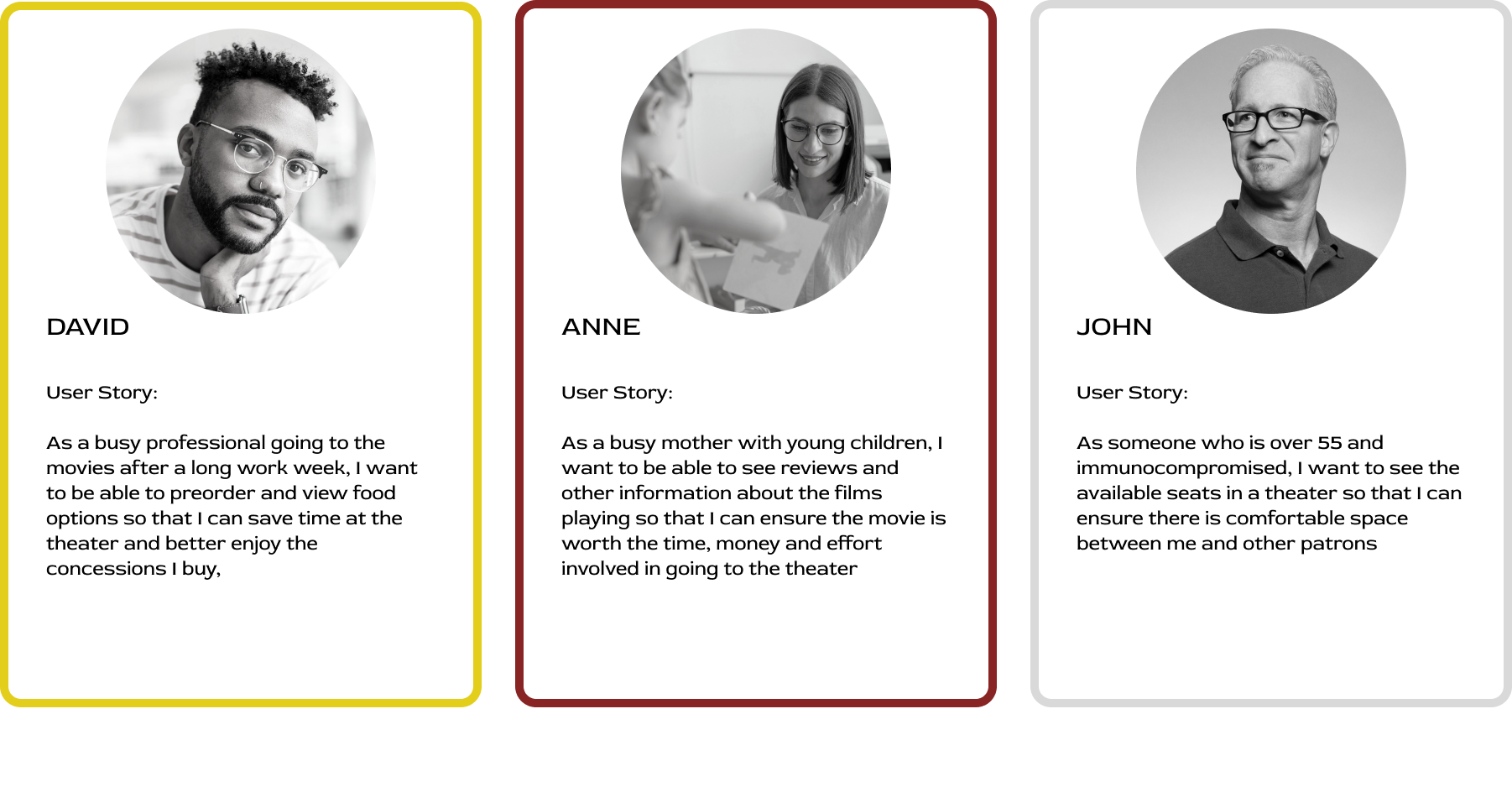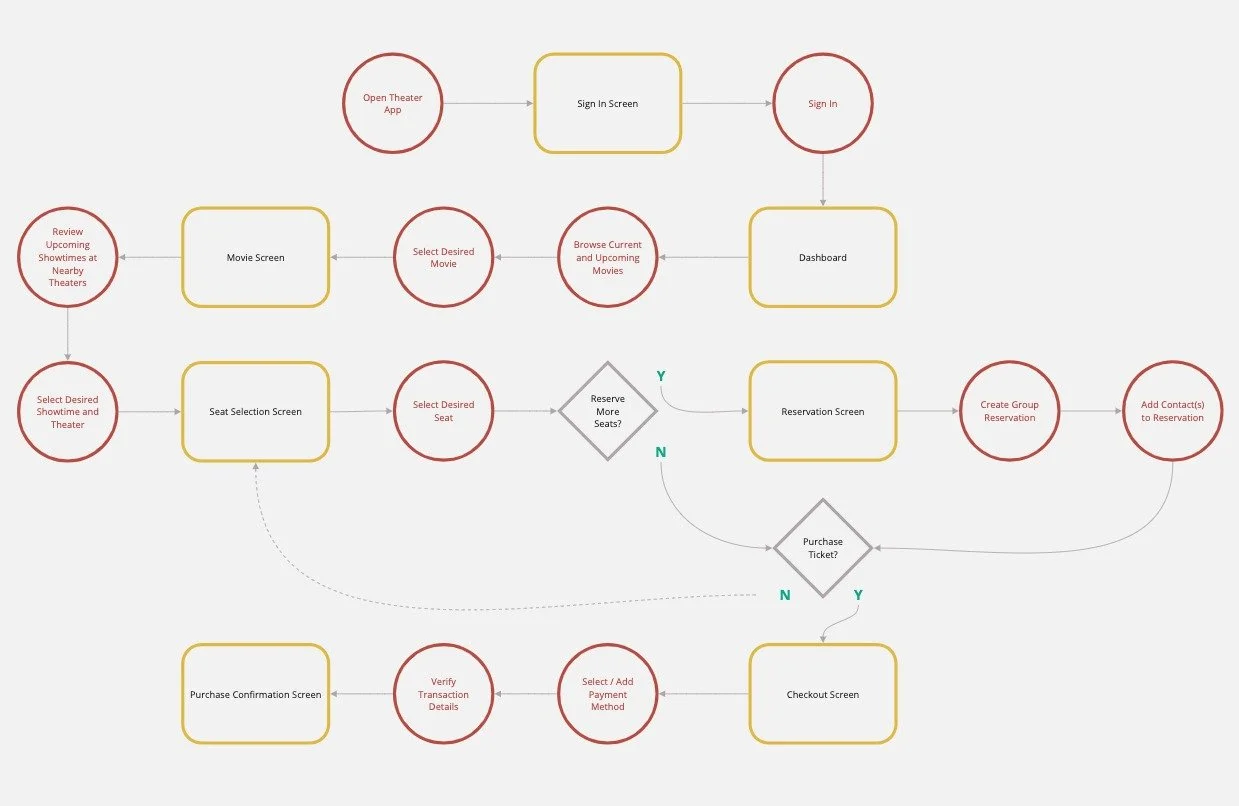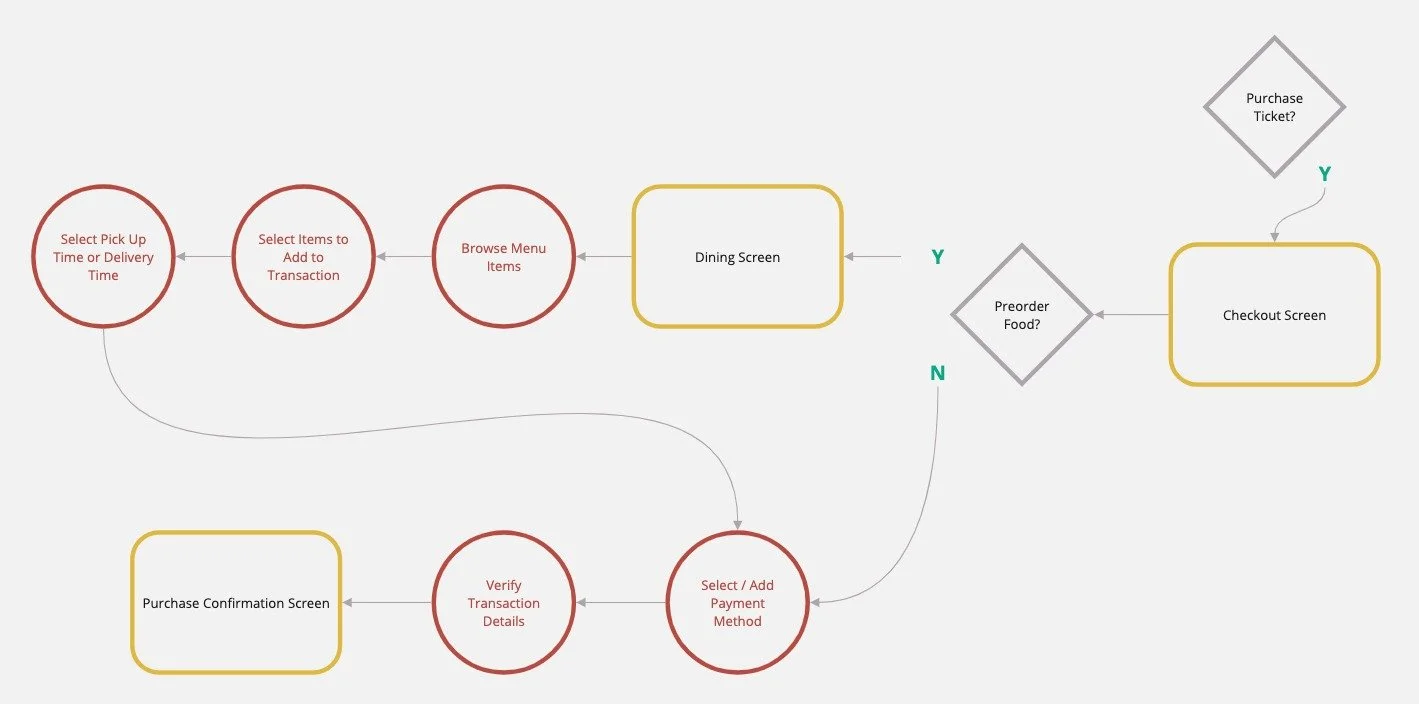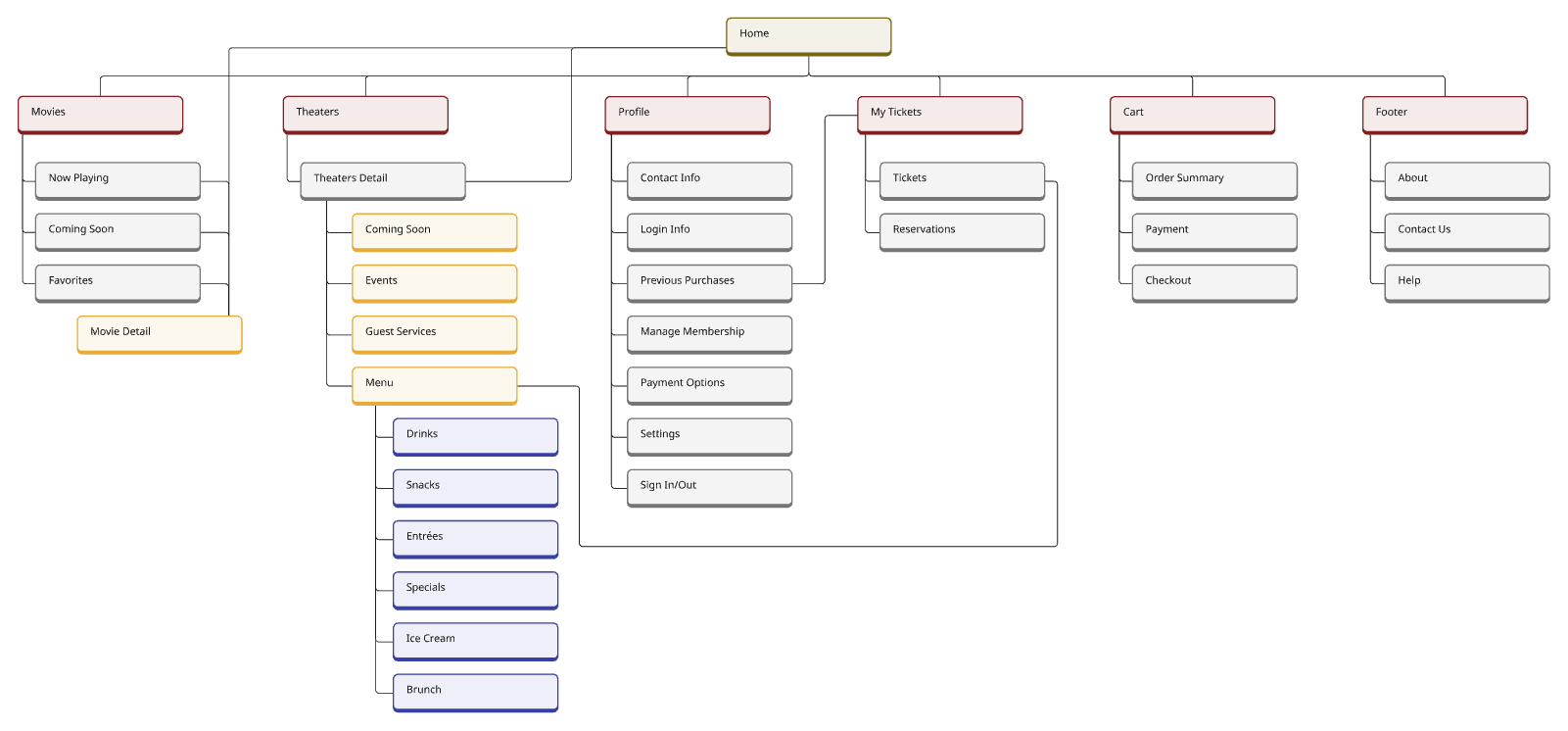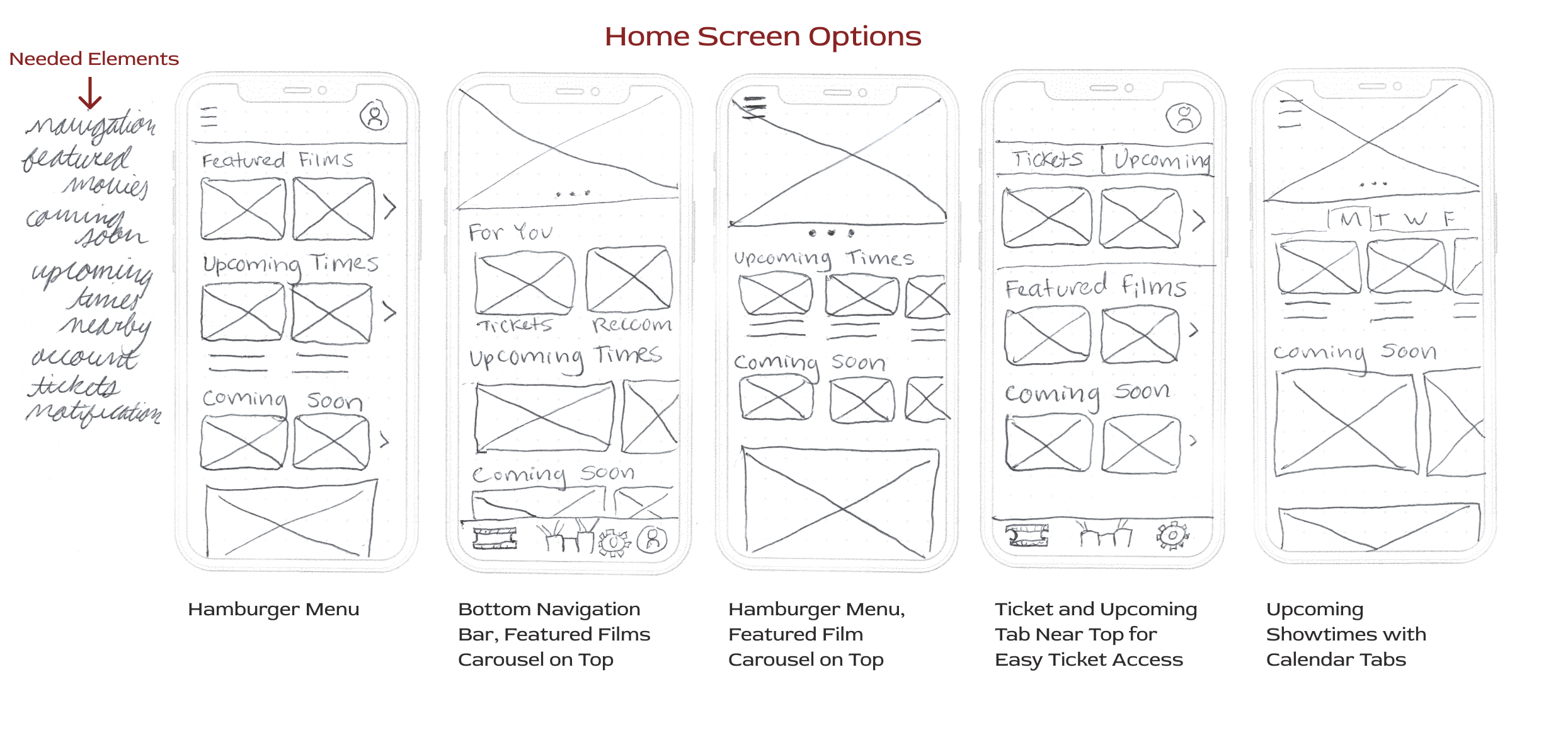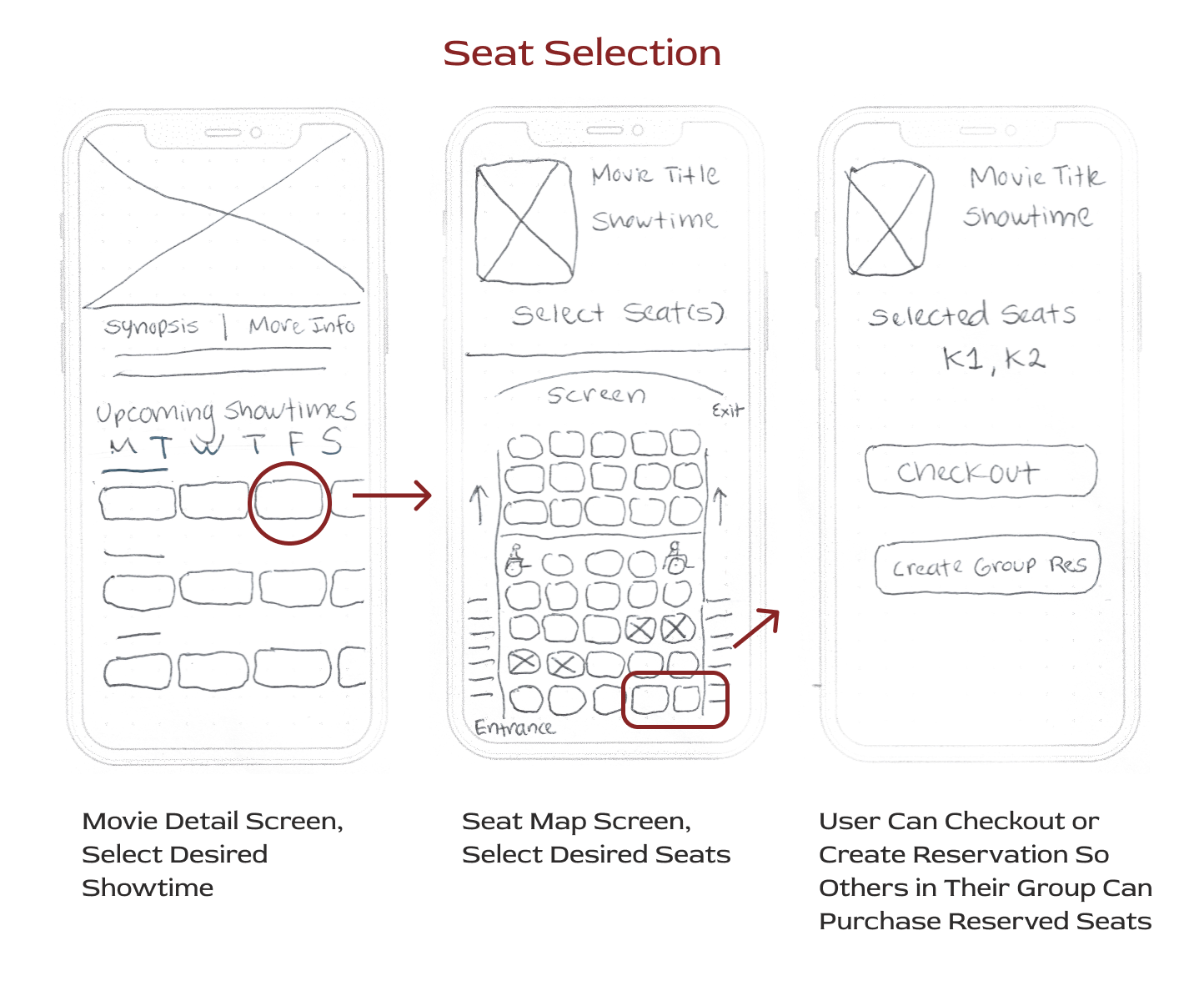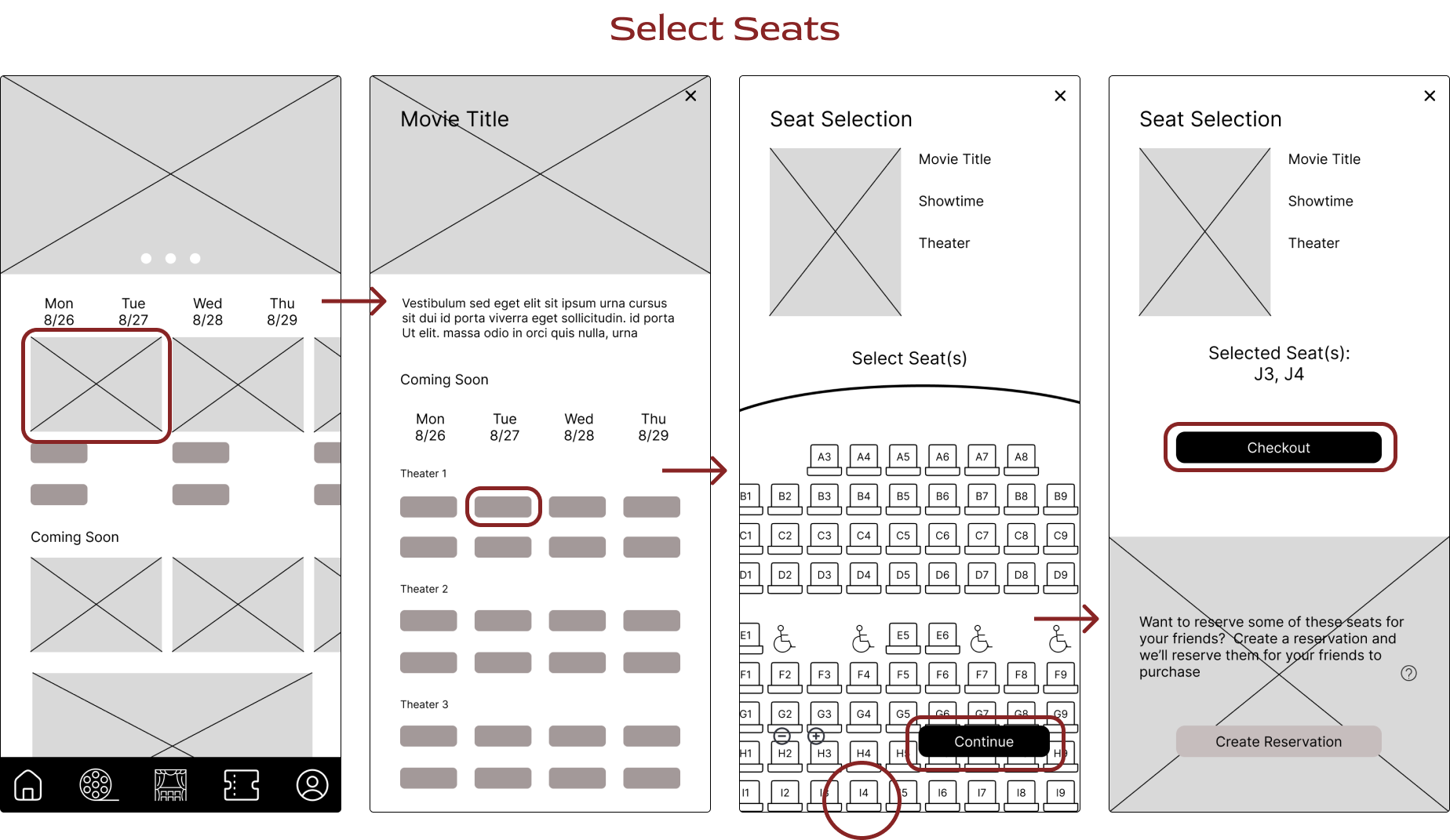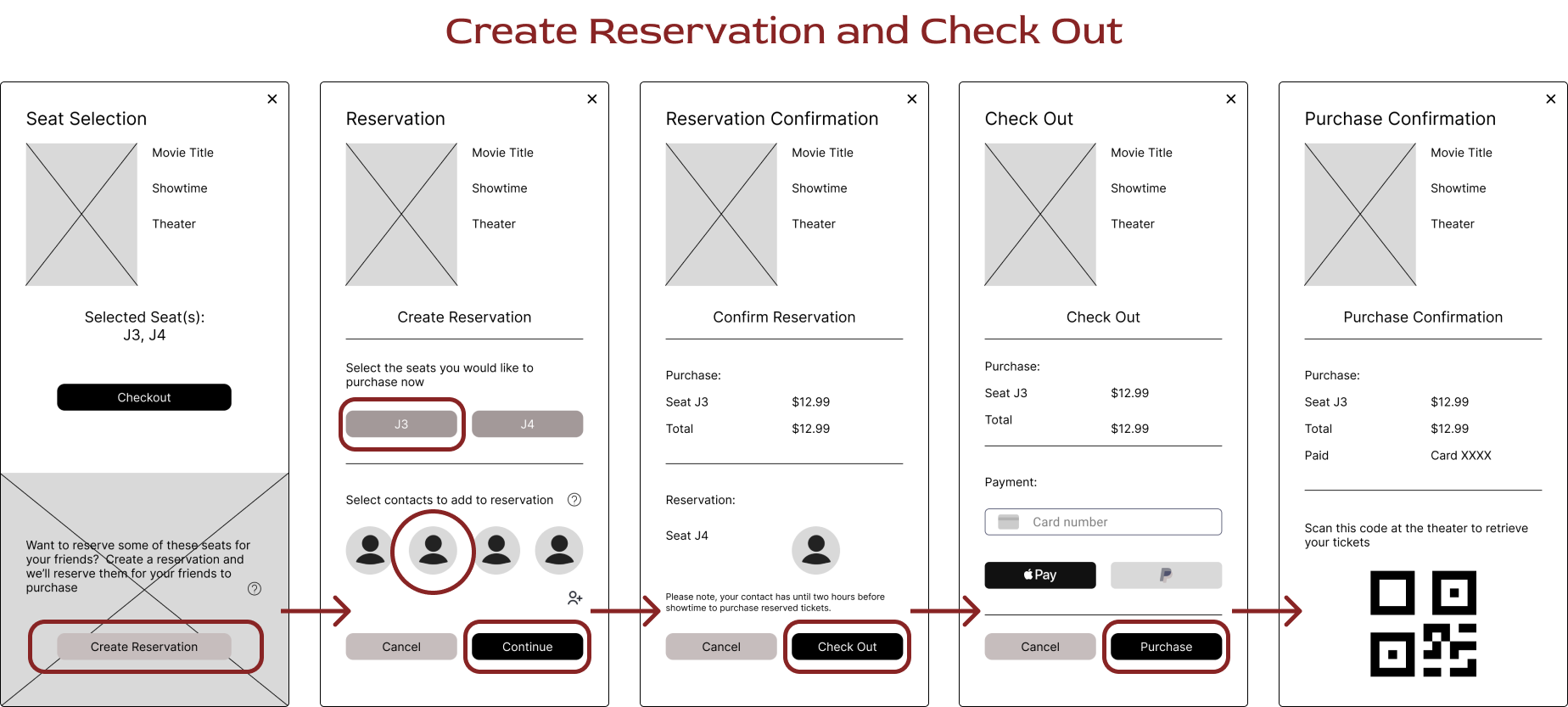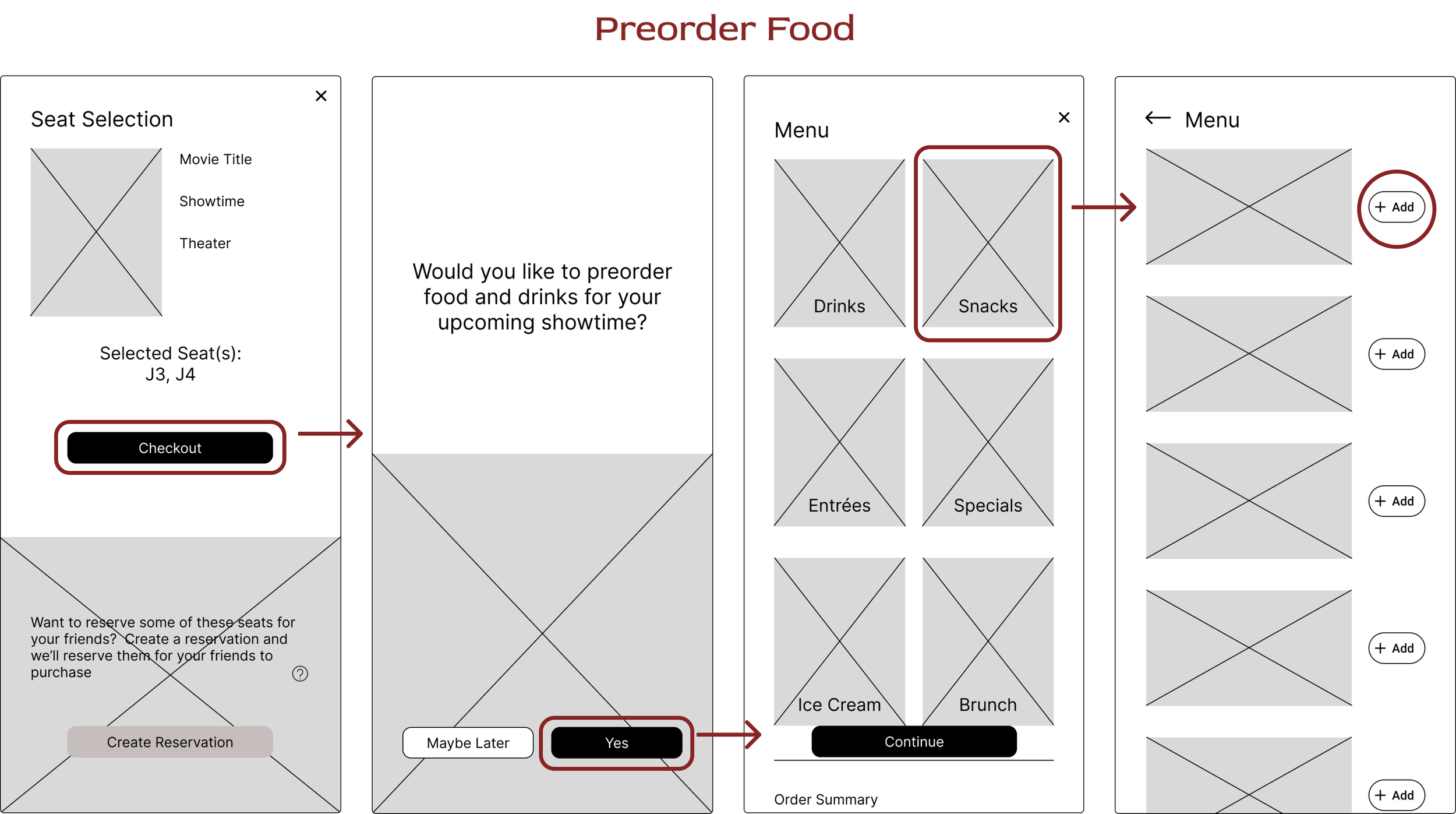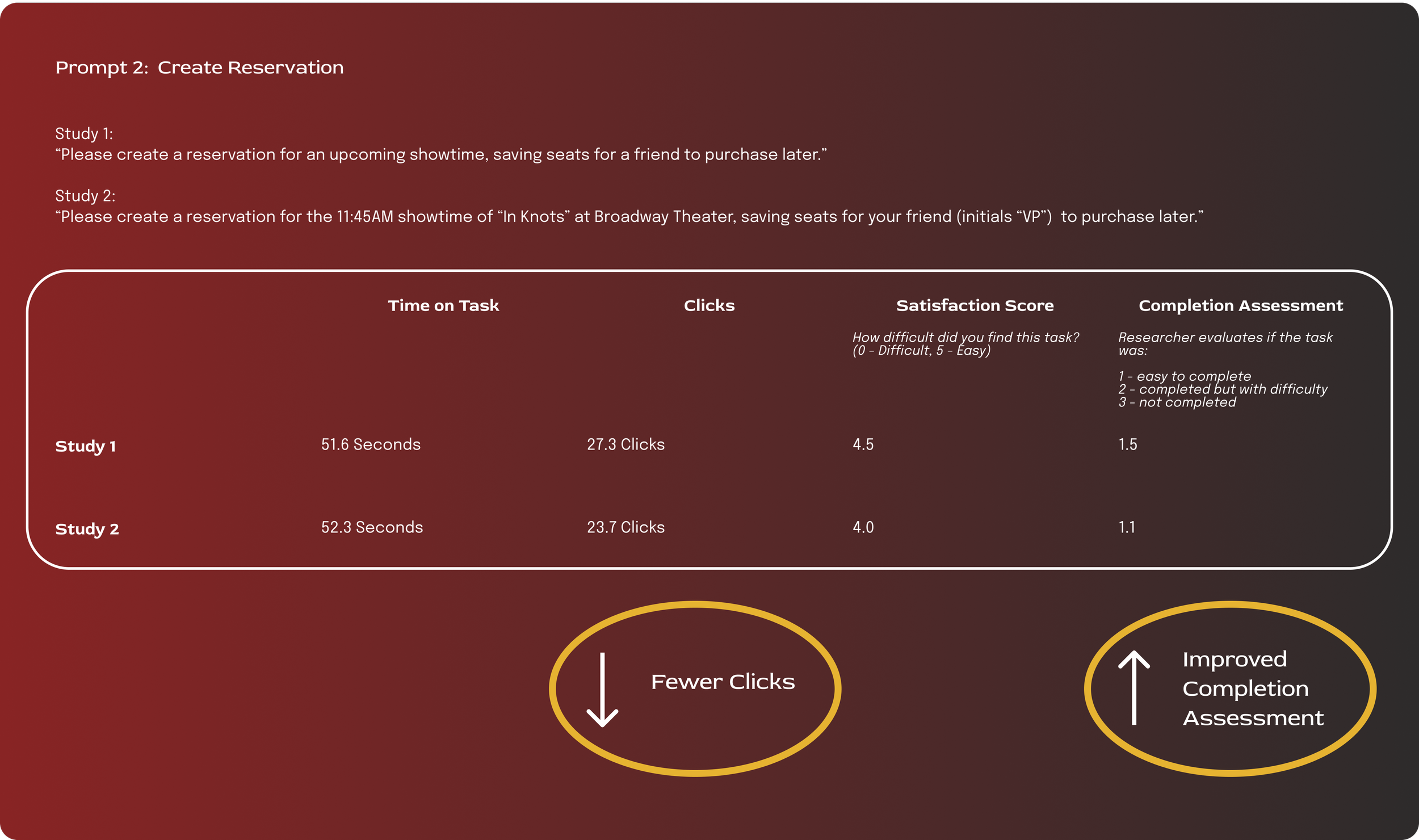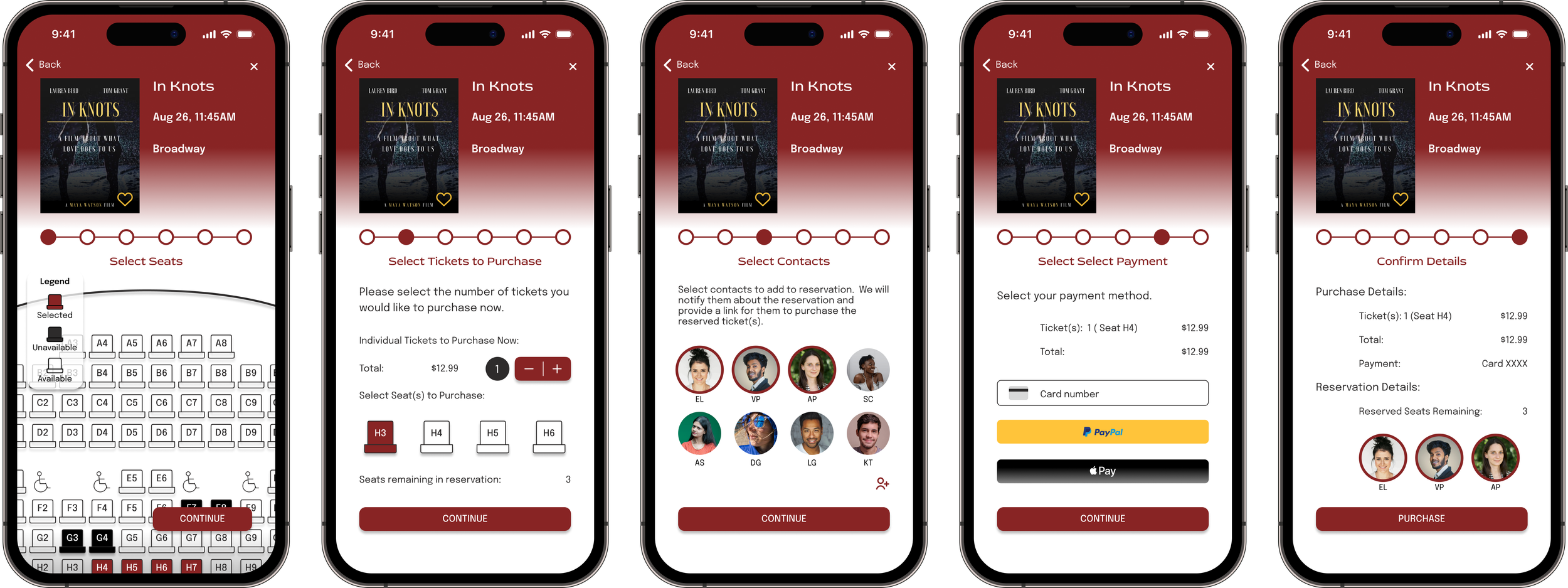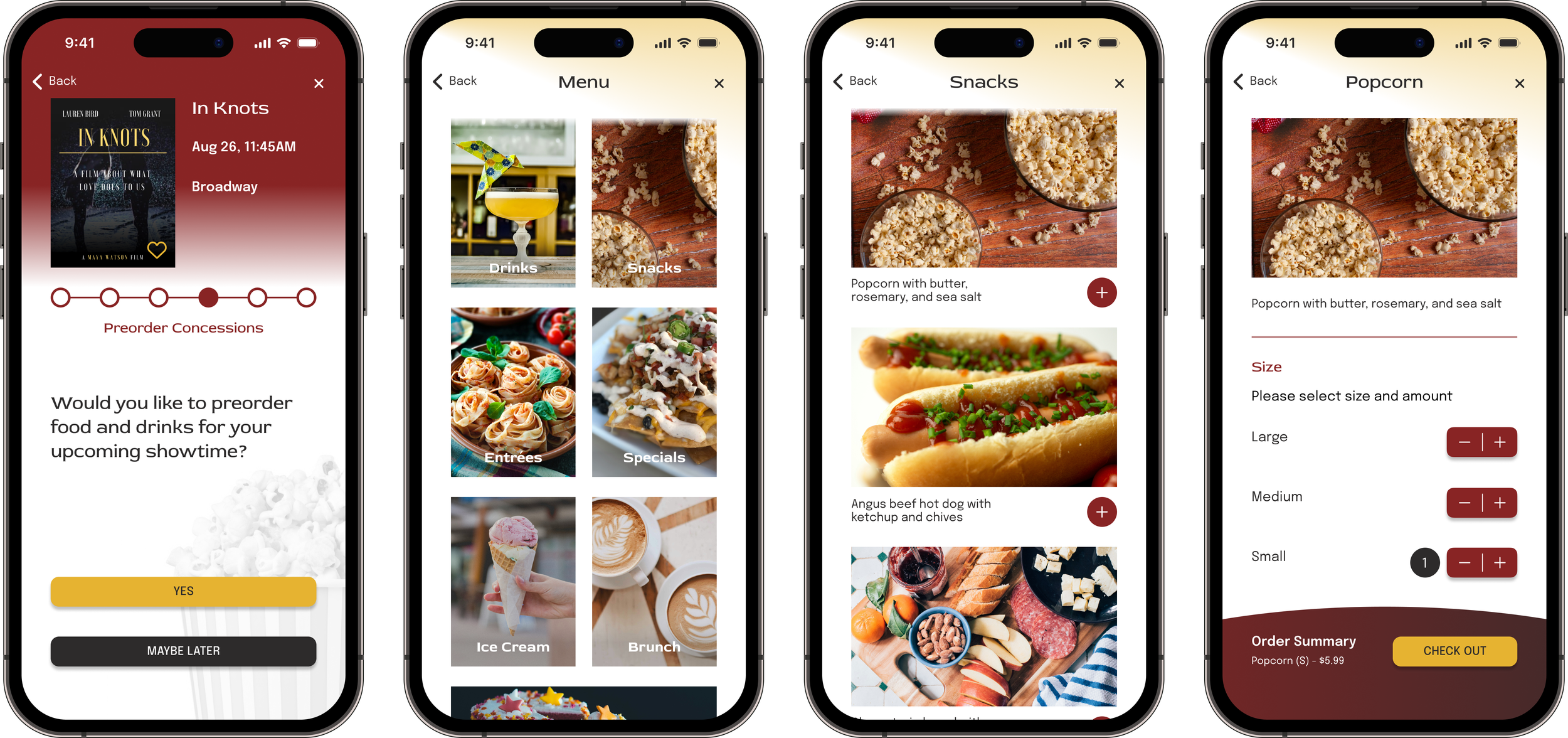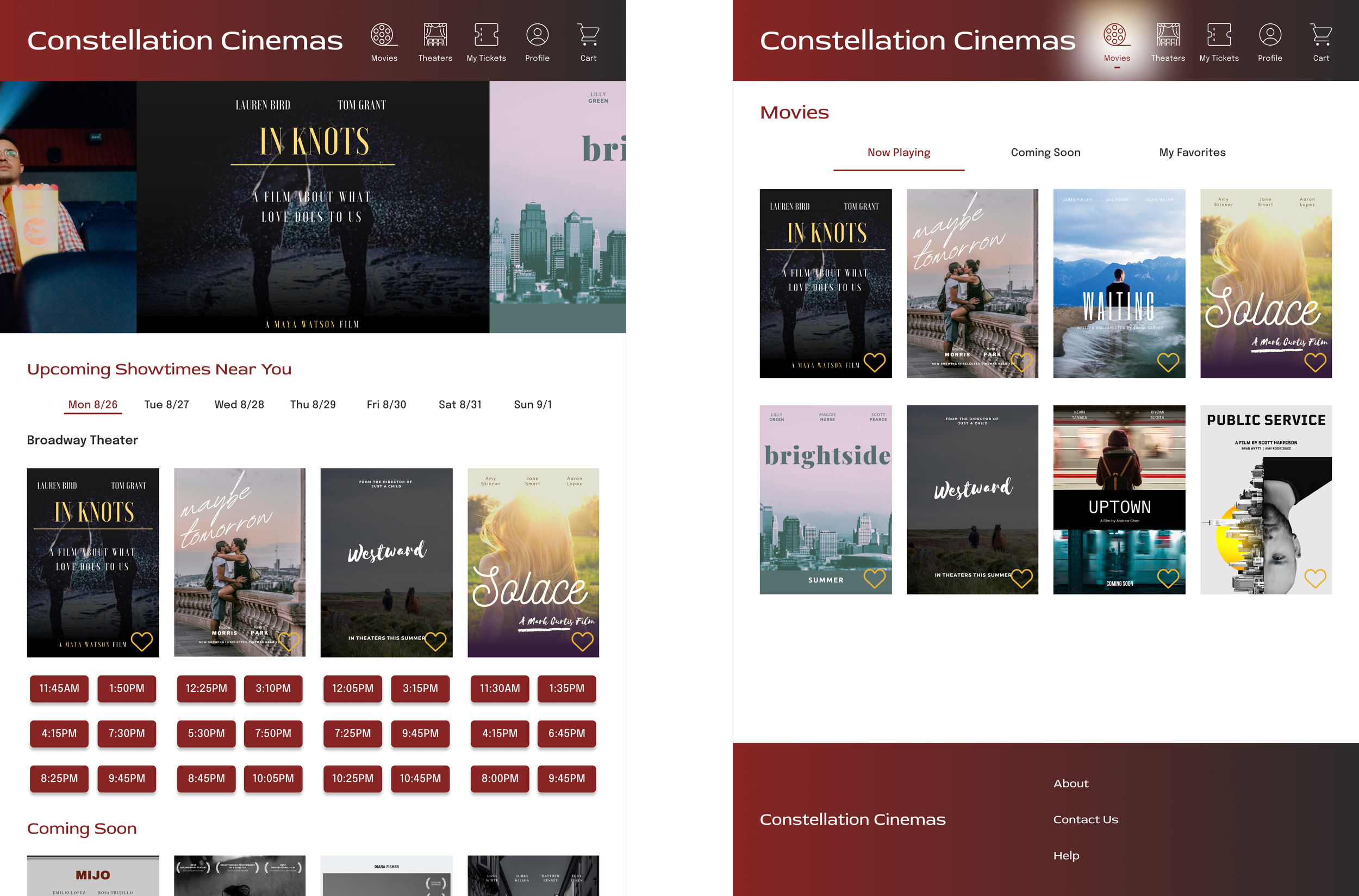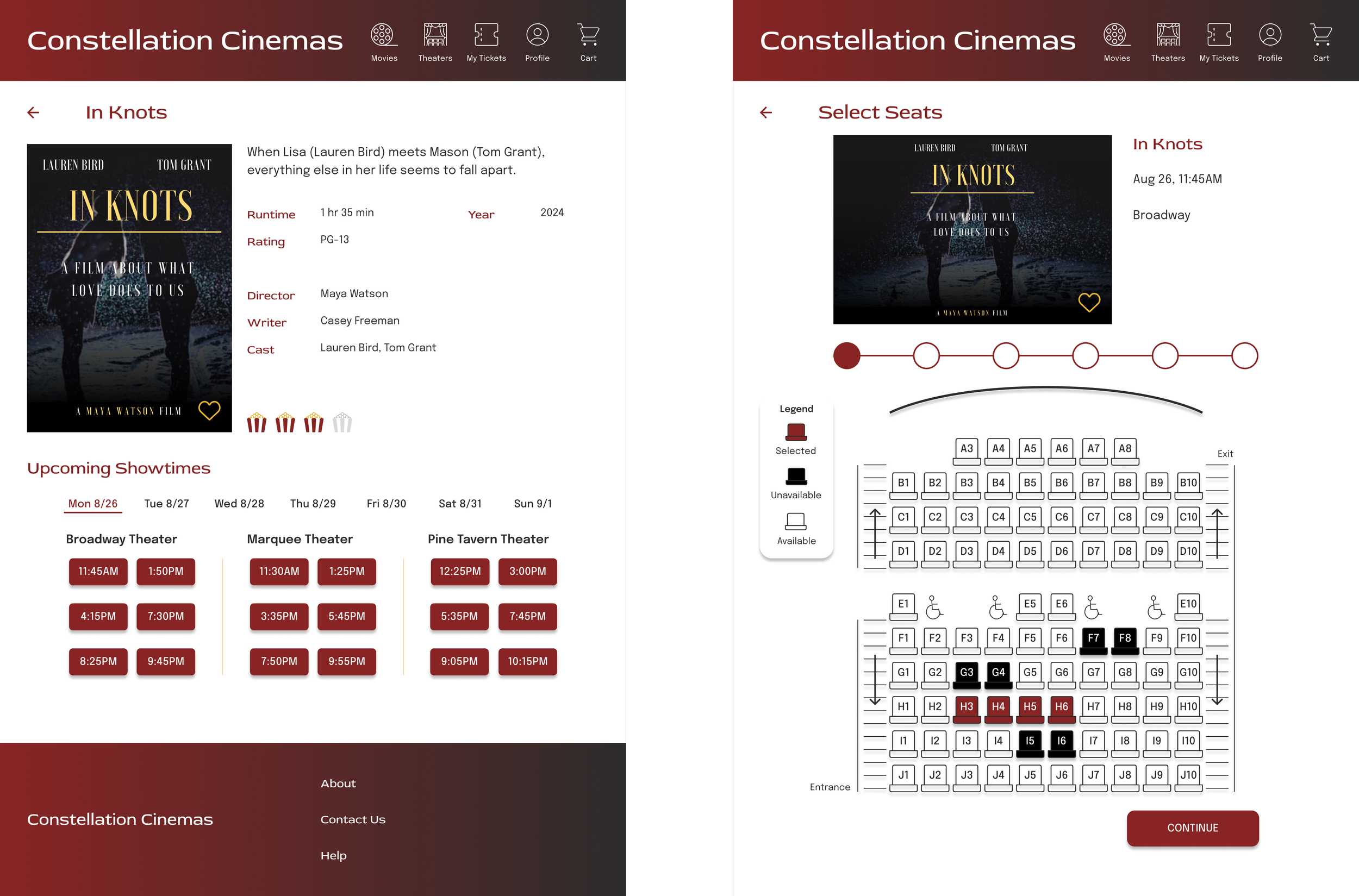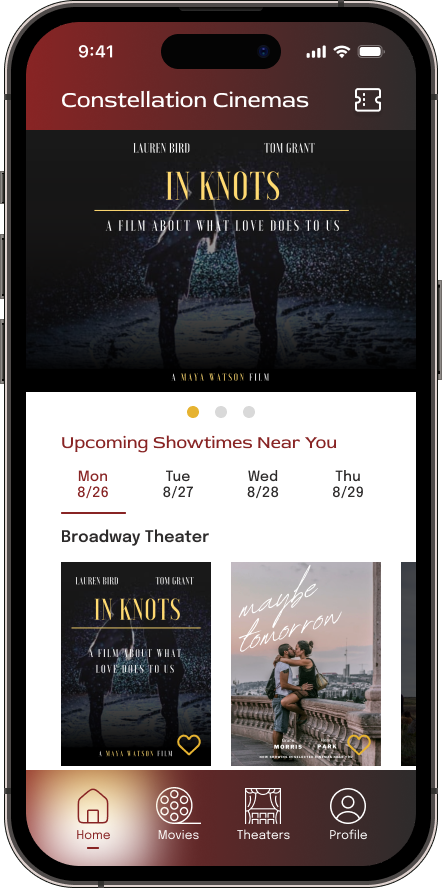
Theater Ticketing App Project Overview
Overview
This project is part of Google’s UX Design Certification program from Coursera.
The project prompt was “Design a mobile ticketing app for a movie theater.”
Objective
Design a movie theater ticketing web application that will engage and entice moviegoers in a post-COVID environment.
My Role
User Research
UX and UI Design
Tools
Figma
Miro
Google Slides
Useberry
Deliverables
Personas
User Journey Maps
Competitive Analysis
User Flows
Storyboards
Site Map
Usability Test Plan, Script, and Report
Low and High-Fidelity Wireframes and Prototypes
Mobile, Tablet, and Desktop Designs
Research: Setting the Scene
Since movie theaters can attract broad audiences, I consulted secondary research to better understand current trends related to theater attendance. My goal was to identify challenges and needs in this research, and then develop hypotheses to address them through my design of a movie theater ticketing application.
Who are frequent moviegoers?
“Since the pandemic, young adults represent nearly three-quarters of frequent movie goers.” - S&P Global
Gen Z and Millennials make up this group of frequent moviegoers.
For older adults, a decline in attendance may be due to 1) health safety concerns and/or 2) the movies being released targeting younger adults.
Source: "Frequent US Movie Goers Are Back, Infrequent Attendees Not so Much." S&P Global, 30 Aug. 2022, www.spglobal.com/marketintelligence/en/news-insights/research/frequent-us-movie-goers-are-back-infrequent-attendees-not-so-much
What does a moviegoer’s journey look like?
Buying Tickets
70% (79% of those 18-34) frequently buy tickets online. There are several reasons moviegoers buy tickets in advance:
To reserve seats
To solidify plans
To skip lines
To avoid sell-outs
Decision Timing
60% (68% of those 18-34) see a movie in the first week of theatrical release
48% decide within a week of showtime that they will see a movie
Attending with Others
Moviegoers often attend with other people:
63% attend with a spouse/partner
49% of 18-34 year olds attend with friends
56% of 35-54 year olds attend with children
Concessions
94% of moviegoers bought concessions
59% of those pre-ordering concessions did so to skip lines
Source: "Fandango's Moviegoing Trends & Insights Spring 2023." Box Office Pro, Spring 2023, www.boxofficepro.com/wp-content/uploads/2023/04/Fandango-2023-Moviegoing-Study.pdf
What are key industry trends to consider?
As theaters recover from the pandemic, they are innovating to attract audiences to the theater and away from the comforts of home.
Theaters are improving sound and projection technology, and they are also adding more comfortable seating and higher-end food options.
Theaters are also exploring other ideas to bring in customers: “…loyalty programs, direct marketing and special events are some of the recent tactics operators have employed to bring in audiences.”
Source: "Movie Theaters Aren’t Dying — They’re Evolving." cnbc.com, 25 Feb. 2023, www.cnbc.com/2023/02/25/movie-theaters-evolving-not-dying.html. Accessed 11 Mar. 2024.
Identifying Moviegoer Personas
Utilizing this secondary research, I established several personas that represent subsets of a broad potential movie-going audience.
David is young with an active social life.
Anne is a busy mother with discerning taste.
John is an older moviegoer concerned about accessibility, health, and safety.
Identifying the Problem
What Will Make Our App Different?
After defining the needs of the personas I established and reflecting on current moviegoing trends, I reviewed the applications of several theater chains. To ensure the design served our personas and enhanced current offerings, I had four key goals:
Opportunities for Differentiation
1) Ability to reserve a group of tickets for friends that they can purchase individually before showtime
2) Detailed reviews and film information, and the ability to favorite a film
3) Detailed theater and seating maps with ramp, stairs, and exit information
4) Detailed concession menu and preordering capabilities
Mapping the User Journey
Establishing User Stories
Defining User Flows
Site Map
Sketching Ideas
Wireframing
Testing the Prototype
Methodology
2 global remote unmoderated usability studies via Useberry
5-10 minutes duration
Users were asked to look at a prototype and prompted with two tasks to complete.
They were also asked to provide feedback on how easy or difficult they found the tasks.
Study 1 tested a mid-fidelity prototype, while Study 2 tested an updated high-fidelity prototype
Participants
6 participants completed Study 1
7 participants completed Study 2
Age Distribution of Participants:
18-25: Study 1 = 0 / Study 2 = 1
26-30: Study 1 = 1 / Study 2 = 1
31-35: Study 1 = 2 / Study 2 = 4
36-40: Study 1 = 0 / Study 2 = 1
41-45: Study 1 = 1 / Study 2 = 0
46-50: Study 1 = 1 / Study 2 = 0
56+: Study 1 = 1 / Study 2 = 0
Theater Attendance: (0-5 Scale, Not Often to Often)
0: Study 1 = 3 / Study 2 = 4
1: Study 1 = 2 / Study 2 = 1
2: Study 1 = 1 / Study 2 = 1
3: Study 1 = 0 / Study = 1
Tasks
While task prompts in Study 2 were more specific due to the increased fidelity of the prototype, both studies tested the same functionality:
Purchase a ticket to an upcoming showtime and preorder a snack item
Create a reservation for an upcoming showtime, saving seats for a friend to purchase later
Test Results and Insights
Based on feedback from Study 1, I translated findings into several insights that I utilized to iterate with the high-fidelity prototype.
More details on the iteration follow in the next section. Notably, the iterations tested in Study 2 resulted in tasks taking fewer clicks on average than in Study 1 and led to better task completion assessments.
Iterating on the Design
As I created high-fidelity designs, there were several adjustments I made based on participant feedback:
1) I broke up the reservation flow into simpler steps to reduce cognitive load so users had two actions on a page at most
2) I updated the feedback when ordering menu items, making it clearer when an item was added
3) I adjusted the size and wording of the text providing instructions for the reservation flow, so users are more likely to understand the steps in the flow
Designing for Additional Breakpoints
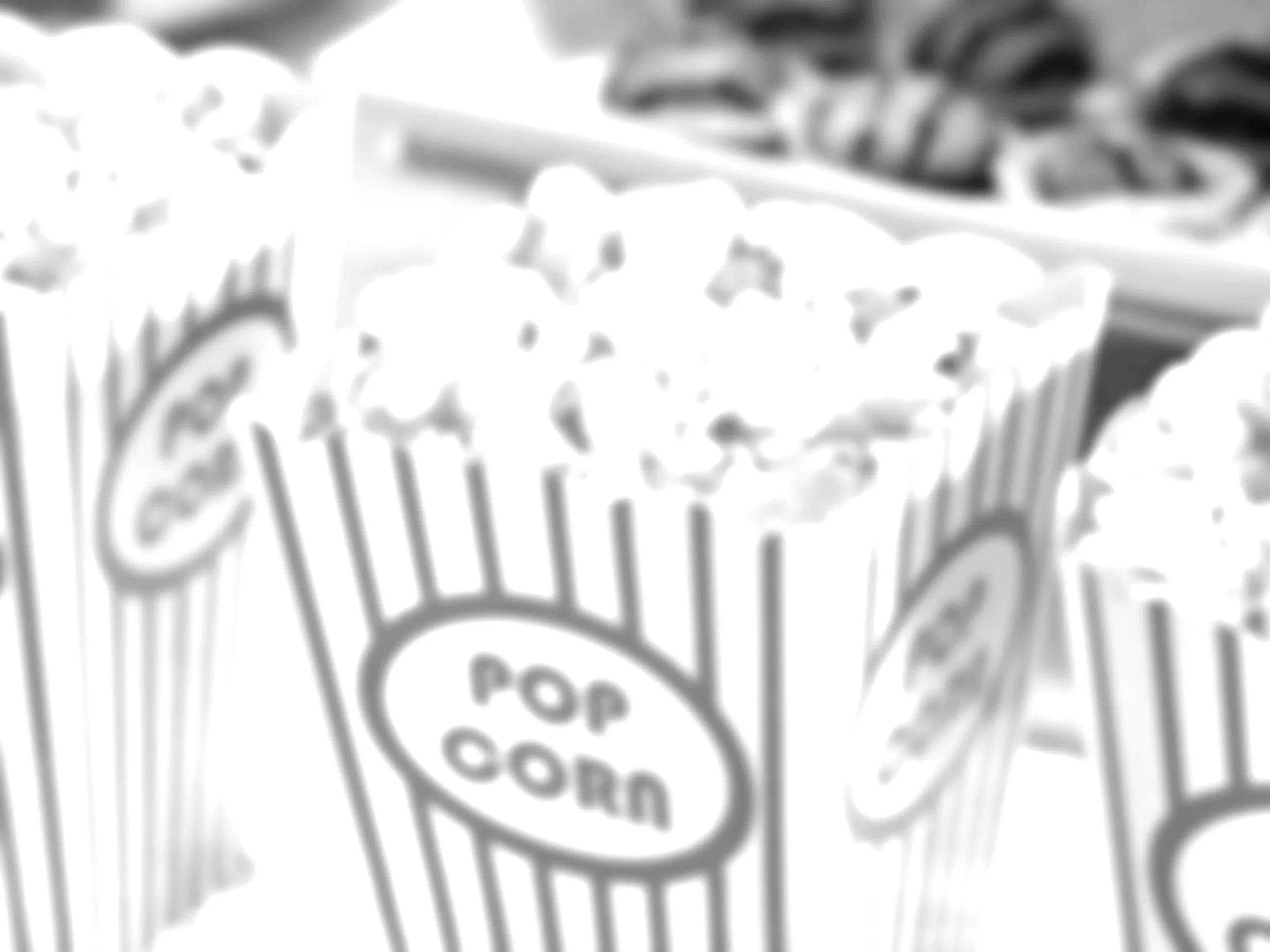
The Prototype
What Did I Learn?
When introducing a new feature like reserving seats for others to purchase later, cognitive load should be minimized so that users can understand the flow, the information or decisions needed, and their place within the task process
Secondary research can be a valuable resource to inform hypotheses
It may take several iterations to find the best layouts while designing for larger screens
Providing users multiple paths to access a flow makes the app easier to use, as several mental models are served
Adequate touchpoint size is crucial for ease of use, particularly in a complex flow like ticket purchases or food ordering
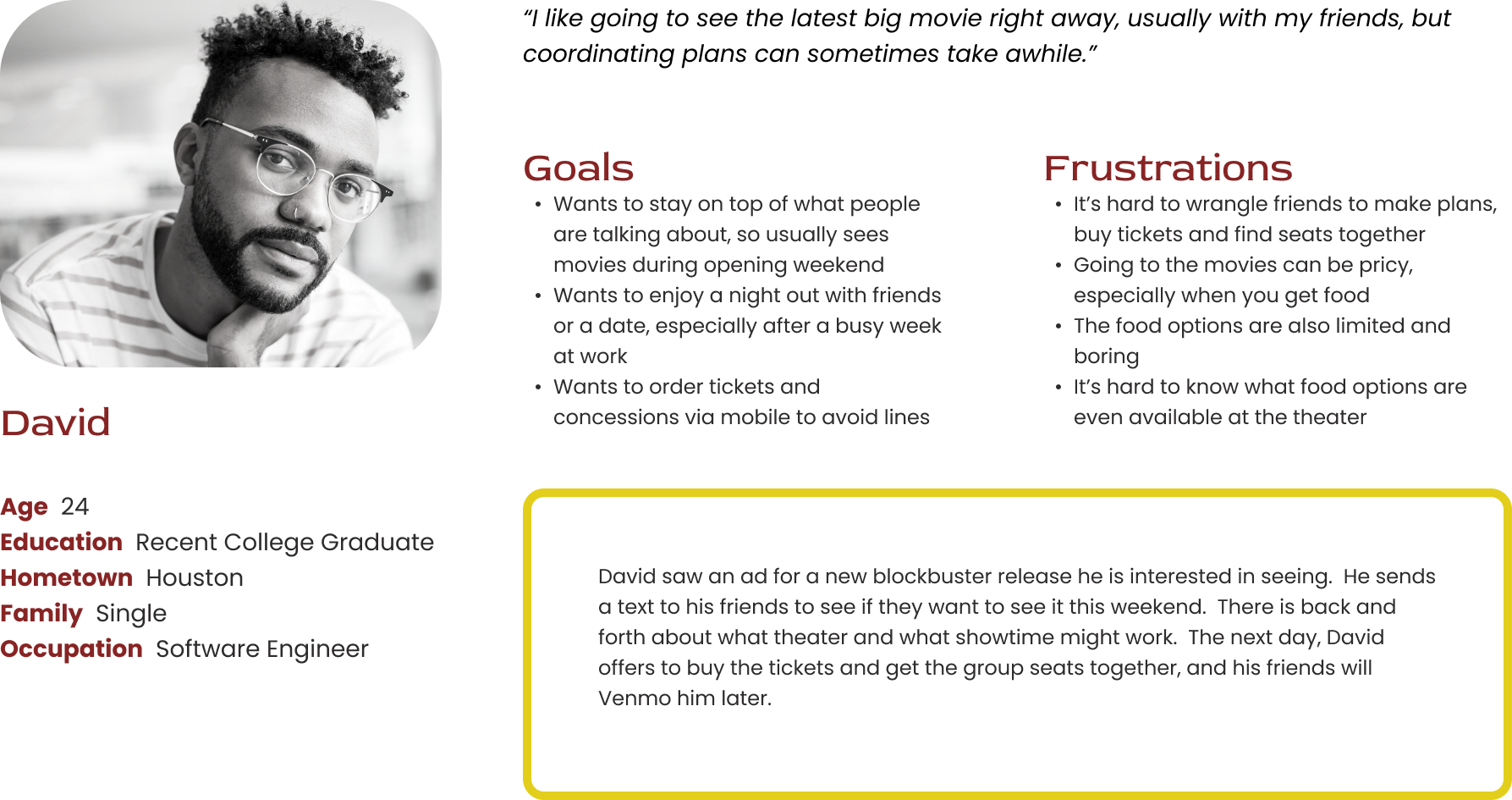


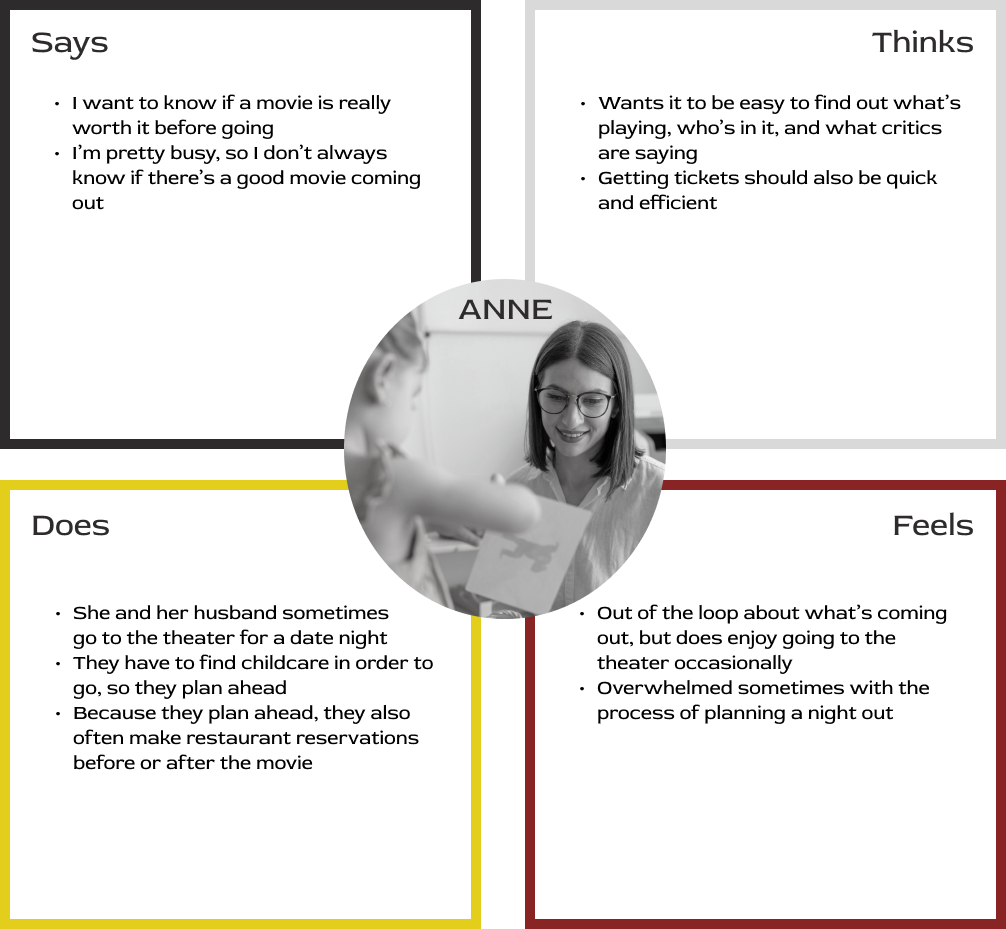








![Google UX Design Certificate - User Journey Map [Template].png](https://images.squarespace-cdn.com/content/v1/64cc334b39bcdb46fb909f1b/149cca7a-efe3-4af6-89ff-1b3bd0678a40/Google+UX+Design+Certificate+-+User+Journey+Map+%5BTemplate%5D.png)

![Google UX Design Certificate - User Journey Map [Template] (2).png](https://images.squarespace-cdn.com/content/v1/64cc334b39bcdb46fb909f1b/ada10602-61b7-48fa-ab1e-48793d58c5c6/Google+UX+Design+Certificate+-+User+Journey+Map+%5BTemplate%5D+%282%29.png)
